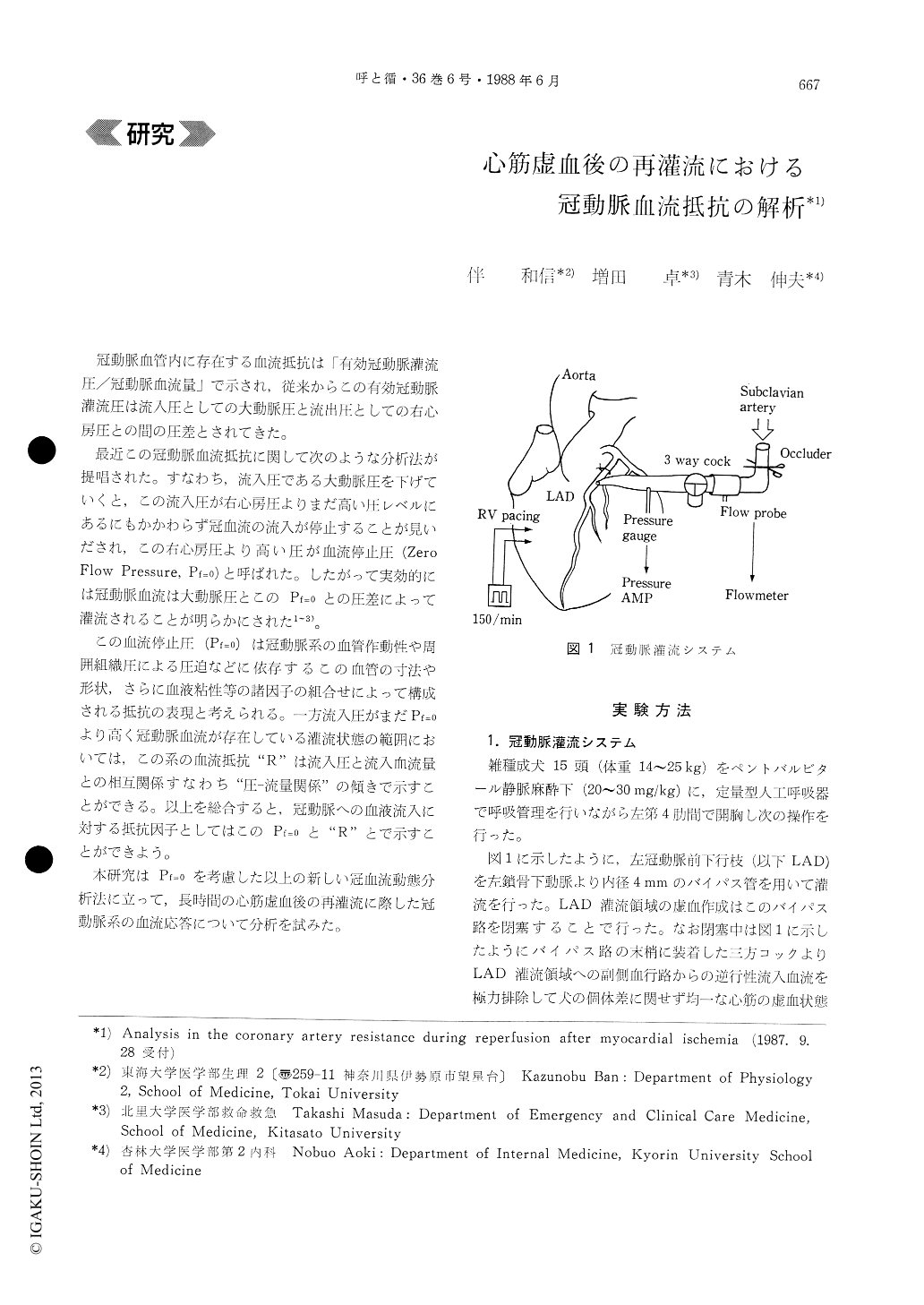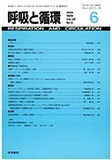Japanese
English
- 有料閲覧
- Abstract 文献概要
- 1ページ目 Look Inside
冠動脈血管内に存在する血流抵抗は「有効冠動脈灌流圧/冠動脈血流量」で示され,従来からこの有効冠動脈灌流圧は流入圧としての大動脈圧と流出圧としての右心房圧との間の圧差とされてきた。
最近この冠動脈血流抵抗に関して次のような分析法が提唱された。すなわち,流入圧である大動脈圧を下げていくと,この流入圧が右心房圧よりまだ高い圧レベルにあるにもかかわらず冠血流の流入が停止することが見いだされ,この右心房圧より高い圧が血流停止圧(ZeroFlow Pressure, Pf=0)と呼ばれた。したがって実的には冠動脈血流は大動脈圧とこのPf=0f=0との圧差によって灌流されることが明らかにされた1〜3)。
The changes in the coronary artery resistance during reperfusion after 2 hours-myocardial ischemia were analyzed by applying recently proposed two indices, namely they are "R" and Pf=0. The former is the resistance in the coronary artery expressed bythe slope of pressure-flow relationship curve con-structed from instantaneous decayes of the coronary pressure and flow taken during long diastole by pausing artificial pacing signal. And the latter is the pressure axis intercept of the curve mentioned above.
Prior to ischemic intervention, both indices were measured in all 15 dog experiments under the con-trol state and during adenosine infusion. Due to adenosine infusion, the mean value of "R" was dropped from control of 3.4 to 0.9 mmHg min/ml and the mean level of Pf=0 was also shifted from control pressure level of 35.8 to 24.4 mmHg.
Since only 8 out of the above 15 dogs survived through 2 hrs ischemia and successive reperfusion process, both indices were measured in these 8 dogs during reperfusion. Among them, infarct was limited to endocardium in 3 dogs (Group C), and wasreached to epicardium in 5 dogs (Group D), which were confirmed by TTC staining and NADH fluo-rescence method. "R" measured during control, ad-enosine and reperfusion were 4.6. 1.0. 0.9 mmHg min/ml in Group C and 3.8, 0.8, 1.4 in Group D respectively, and more decrease in "R" was de-monstrated during reperfusion in Group C than in Group D. Pf=0 was also shifted down in Group C to the level seen in adenosine infusion, but it re-mained around the control state level in Group D.
In conclusion, 1) Pf=0 has to be subtracted from the aortic pressure to obtain the actual coronary perfusion pressure level used for the evaluation of the coronary artery resistance. 2) "R" decreased significantly during reperfusion compared with that in control, but its magnitude seemed to depend on the extent of infarction.

Copyright © 1988, Igaku-Shoin Ltd. All rights reserved.


